Another doozy in the sexualization of young girls: “Girl’s Fishnet Tights.”
Borrowed from Lotería Chicana’sflickr set.
—————————
Lisa Wade is a professor of sociology at Occidental College. You can follow her on Twitter and Facebook.
Another doozy in the sexualization of young girls: “Girl’s Fishnet Tights.”
Borrowed from Lotería Chicana’sflickr set.
—————————
Lisa Wade is a professor of sociology at Occidental College. You can follow her on Twitter and Facebook.
These two Halloween costumes in a mall display, snapped by Deeky (here and here, via Shakesville), make a joke of women working in masculine occupations by suggesting that they’re, essentially, sex workers.
Captain Layover:
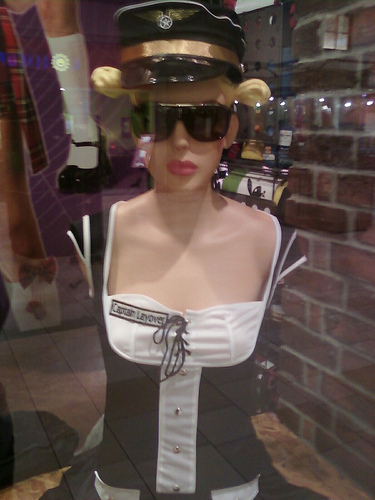
Free Rides:

See our other Halloween-related posts: two extra-special costumes (the Anna Rexia costume and the Sexy Scholar), Max Weber jack o’lantern (by yours truly), Obama mask sold as terrorist mask, a Sarah Palin effigy, handling sex offenders on trick-o’-treat day, and costume catalog analyses (here and here).
—————————
Lisa Wade is a professor of sociology at Occidental College. You can follow her on Twitter and Facebook.
We’ve collected many images of the gendering and sexualization of food, where foods are turned into sexy female bodies or are shown alongside sexy women. Miriam sent us a link to Brick House Tavern & Tap, which markets itself as a Hooters-lite for-the-guys restaurant. The menu includes some sexualized elements, and is based on a clear gendering of items. Clearly it’s objectifying women (check out the website), but what interests me is the message we get about masculinity.
There are salads for men and women; the male version includes two types of meat and boiled egg:

Men are supposed to control things; foods are described as dominant or submissive. I presume the “man-cave” dish would fall into the dominant category:

Men’s foods are unhealthy. Steamed, rather than fried, options? Those are for the ladies:

Real manliness is associated with guns:

UPDATE: Reader Lisa says,
I thought the “gun show” reference was to biceps – e.g. men have muscles and women don’t. (e.g. Do you have your tickets to the gun show? har har har)
That makes total sense. I’ve had the good luck to never have heard that particular joke until now.
There’s also a class element:

And desserts are “the happy ending,” with “double d” cupcakes and “sweet, innocent” (girl)-next-door apple crumble:

It’s a common theme (see Lisa’s post on frozen dinners): real men need big meals with lots of meat. They don’t worry about health–they want you to deep-fry everything, dammit! Trying to eat a healthy, low-fat diet is for women. And foods are depicted as parts of women’s bodies (“double d”) or associated with sex (“the happy ending”).
See also Campbell’s ad saying beef soup is for men only.

Lindsay H. sent in a Kingsford Charcoal ad, in which we learn the proper cooking roles for men and women–men cook outside, women cook inside:
It’s just like how men are supposed to do their cleaning outside by mowing the lawn! Glad we cleared all that up, and also instructed women how to avoid embarrassing their male partners in front of their guy friends.
Emma B. sent in an image of this wonderful toy:
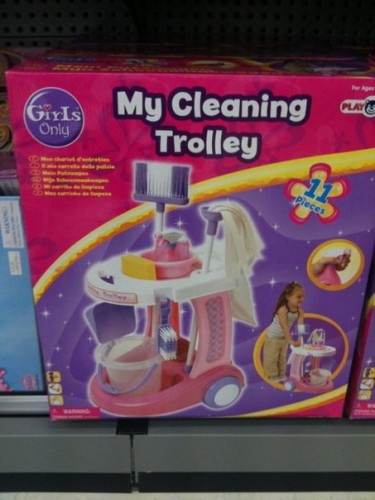
As Emma pointed out, commenters on digg seemed to mostly interpret it as a hotel housekeeper’s trolley, though the website referred to cleaning the house.
There is nothing inherently wrong with toys that allow kids to mimic doing household tasks. Kids like to play at doing what they see adults doing–in fact, it’s an essential part of development. I had a toy grocery cart as a kid and thought it was awesome, particularly when I forced my cat to ride in it (he was very patient).
What annoys me is the way these products are so clearly gendered–in this case, blatantly so (“girls only“). Girls learn that playing at household chores is fun fun fun:
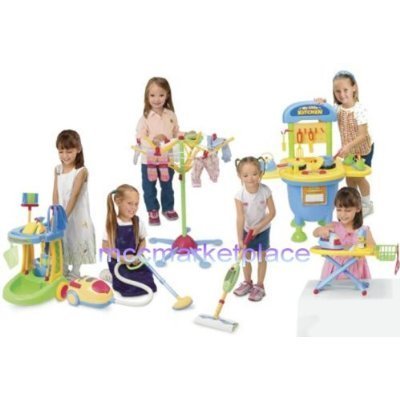
To my surprise, though, I found one site that showed a boy playing with the cleaning trolley:
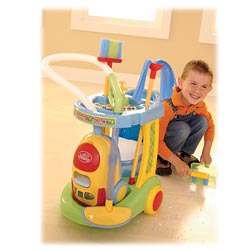
I don’t think I’ve ever before seen a cleaning toy with a boy pictured playing with it. And that’s awesome. Though for reasons that are not clear to me, this site listed the trolley at $158, while it was $35-45 at all the other websites.
So I was able to find one example of a boy playing with a housework toy, but the overall marketing message was still clearly that housework is fun for girls…only.
NEW (Dec. ’09)! Lynne S. sent in these photos of housework toys at Toys ‘R Us that include both girls and boys playing:
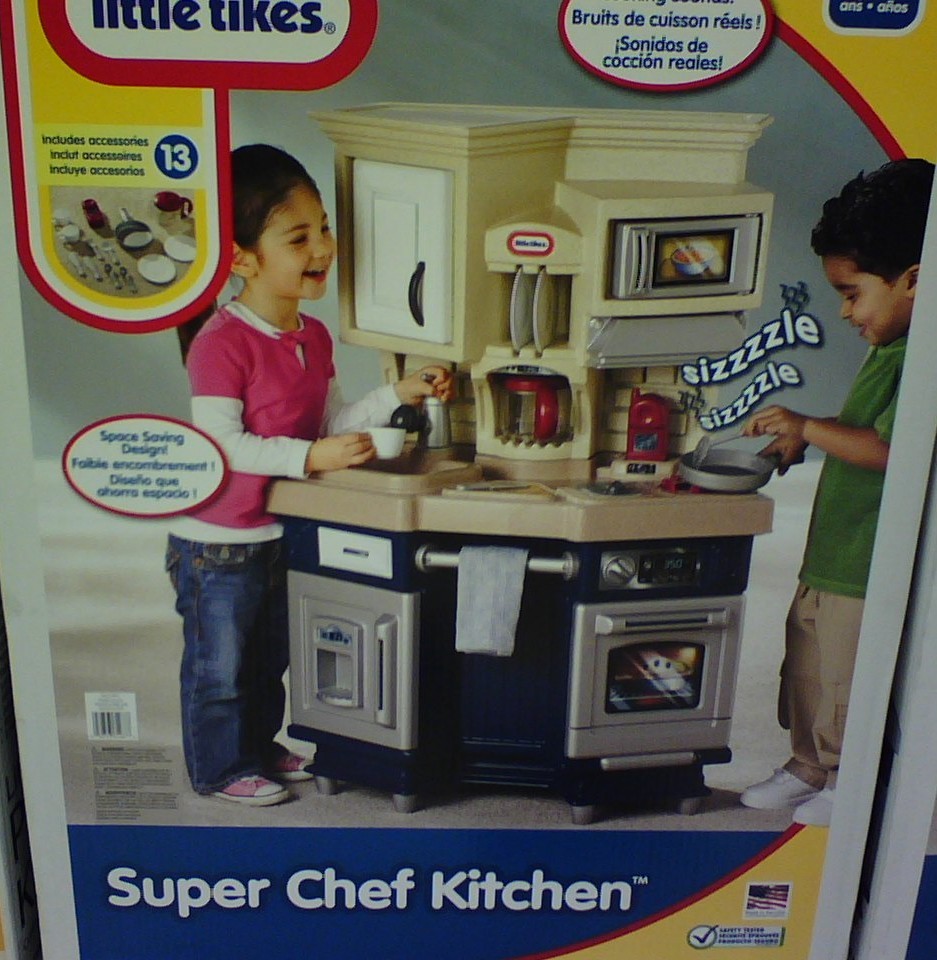
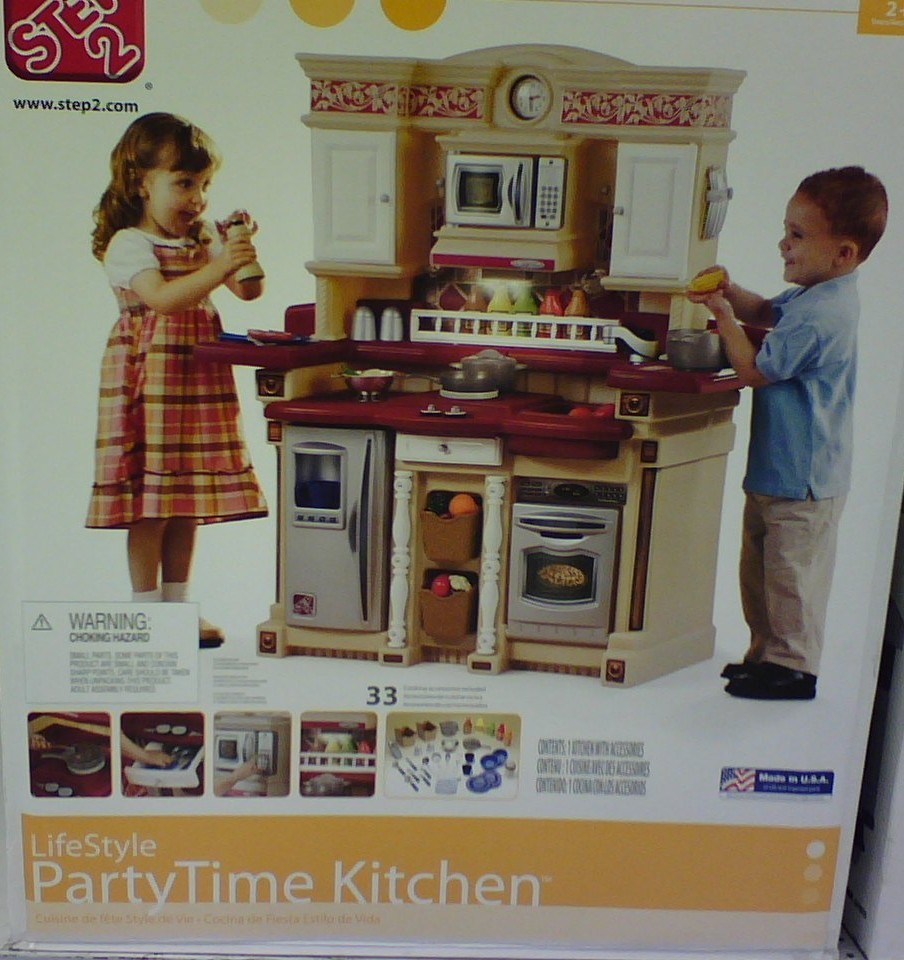
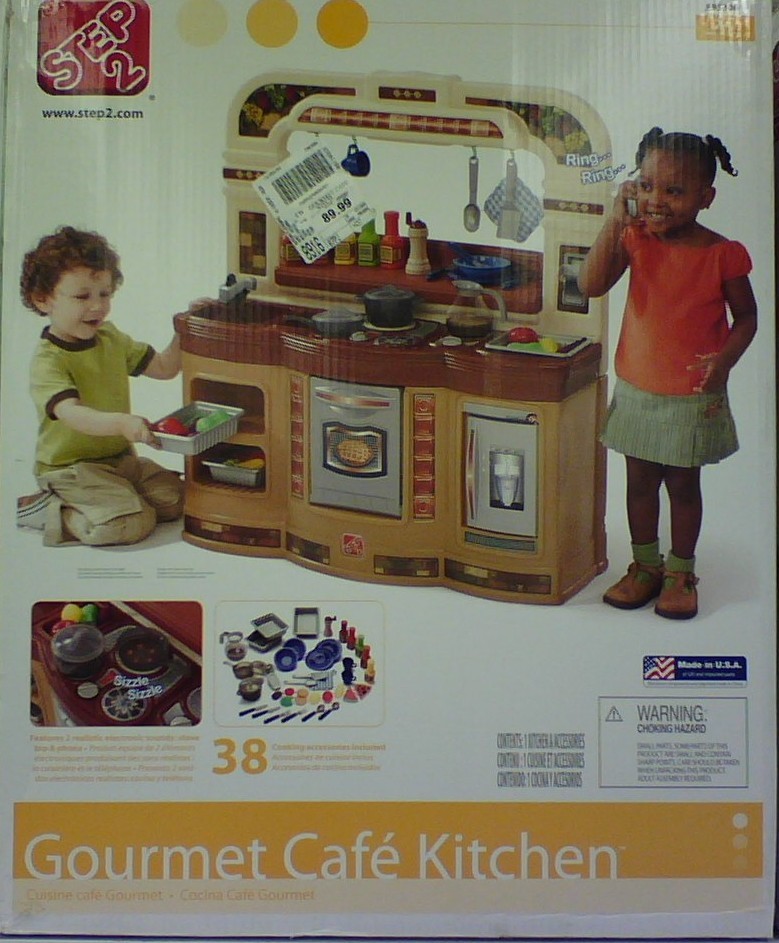
ALSO NEW (Dec. ’09)! Fia K. found some examples too:
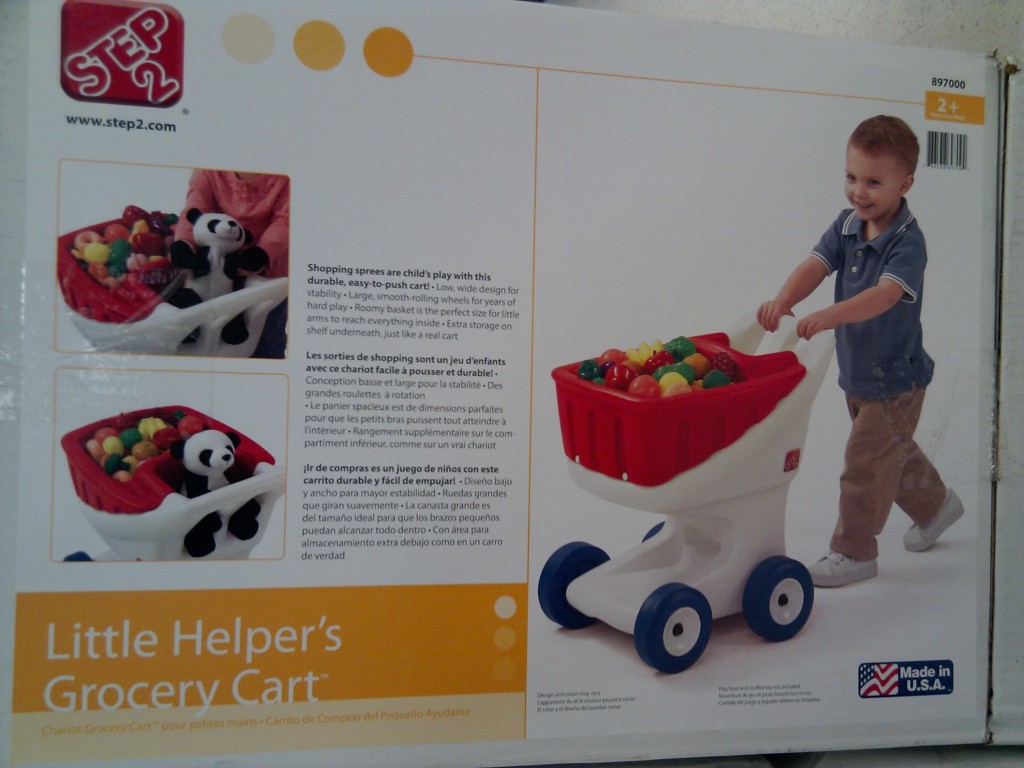
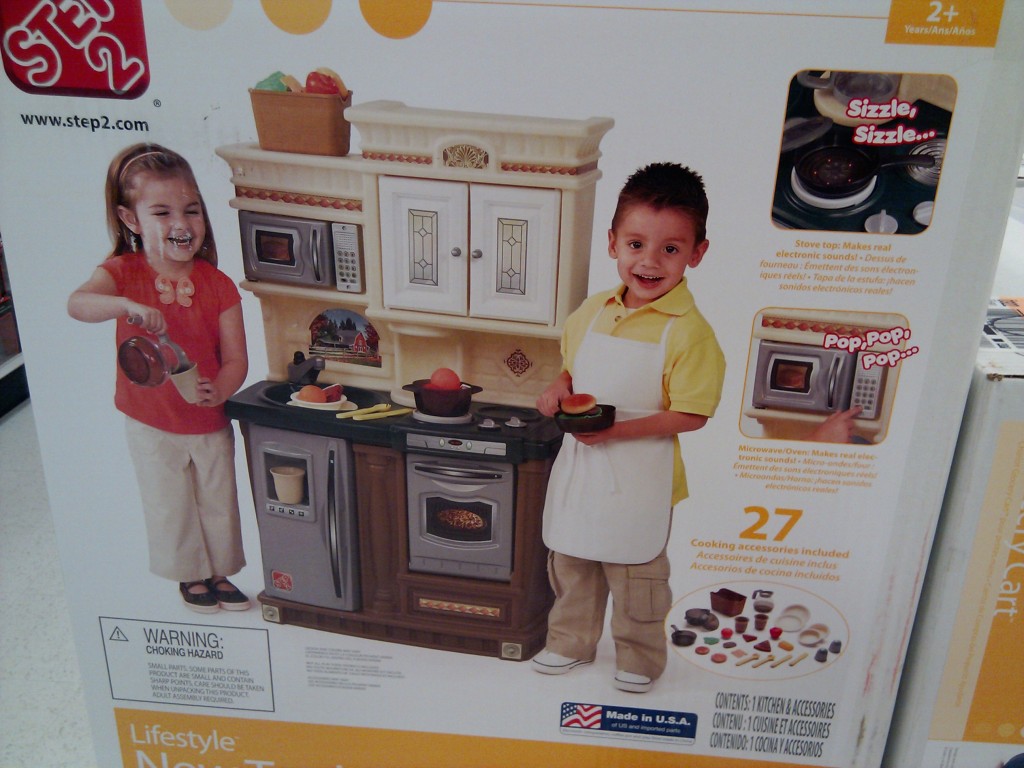
See also this post featuring screen shots from a site that advertises masculine toys primarily with girls.
But see these posts on the Rose Petal Cottage, rigidly gendered Sears and Amazon catalogs, and Mom/Daughter domesticity by Nintendo.

Dmitriy T.M. sent a link to a Cracked list of misguided products. Among them, was a discussion of a doll I remember from when I was a kid: the Cabbage Patch Kid Preemie. Cabbage Patch Kids were all the rage. The preemie version, a supposedly prematurely born “kid,” was a sort of spin off.
Cracked points out one of the ironies here:
So What’s the Problem?
You know what’s not all that cuddly? A one and a half-pound infant fighting for its fragile life in a coffin-shaped incubator with more tubes and machines attached to it than Weapon X. Don’t forget the bandages that keep the light out of its underdeveloped eyes, or the little heating beds it has to lay in because it can’t maintain its body heat. Toss in some weeping parents and a couple of nurses probing and prodding its frail little body and you’ve got the must-have toy of the season.
Given this deserved critique of the product, what exactly is it about the idea of a premature baby that would make Coleco think it would appeal to children and their parents? I think this commercial gives us a clue:
The Cabbage Patch slogan, “You can give them all of your love,” is an excellent example of what this doll is really about: socializing young girls to be nurturers focused (apparently exclusively) on children.
In this case, what could possibly require more nurturing than an infant? A premature infant!
The Cabbage Patch Kids website, where you can still buy preemies in addition to kids and babies, says that this premature version of the doll “will require extra attention and lots of Tender Loving Care. Be sure to spend lots of time with these tiny ones once you adopt.” As Grandma reminds the girl, “Preemies need extra special care.” And the girl responds in a way that implies that a baby that needs “extra special care” is even more rewarding than a baby that simply needs special care. The more self-sacrifice is required, the happier a girl will be.
Some deep and disturbing socialization indeed.
Oh and also, I couldn’t help but also share this doozy with you, from the description of the Preemie doll:
These small babies have no hair, but come with a choice of eye colors in blue, green, brown, and Asian.
—————————
Lisa Wade is a professor of sociology at Occidental College. You can follow her on Twitter and Facebook.
According to the Madsen Bicycles website, submitted by Mary S., women dote on children…
…and look lovely with flowers:
While men do sporty stuff…
…and more sporty stuff:
—————————
Lisa Wade is a professor of sociology at Occidental College. You can follow her on Twitter and Facebook.
Lynn drew our attention to the American Apparel webpages for men’s and women’s clothes. She notes a distinct difference:
On the Women’s clothing pages, the girls are modelling THEMSELVES in addition to the clothes. You see a butt purposefully sticking out here, a shirt pulled up to there, a head thrown back in a coquettish manner, a back arched this way and that.
On the Men’s pages, the men are essentially just “standing there”, letting the clothes speak for themselves.
I’ve included screen shots of all of the models in the slide show, so you can judge for yourself (sorry for the funky formatting; there were more images of women than men).
—————————
Lisa Wade is a professor of sociology at Occidental College. You can follow her on Twitter and Facebook.